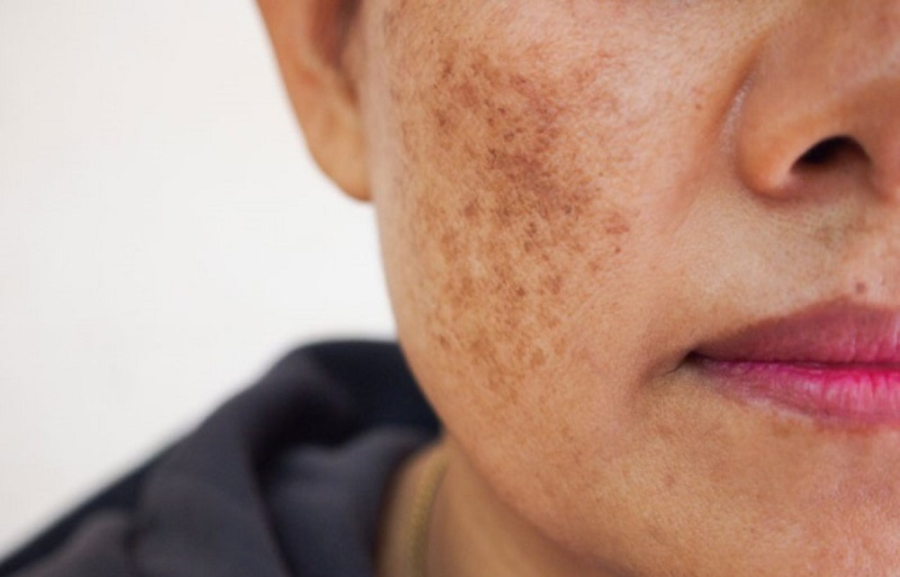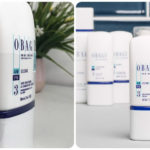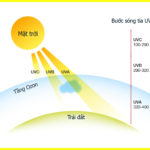According to experts, dark spots on the skin result from exposure to ultraviolet (UV) rays, subsequently causing pigment-producing cells, or melanocytes, to multiply locally. As a result, skin cells will increase in pigmentation.
Age is one of the factors that increases the likelihood of dark spots appearing. But it is primarily the result of rays coming from sunlight, particularly UV rays.
Professionals have linked age as a factor of this issue because dark spots develop after being exposed to an accumulated amount of sunlight over an extended period.

The best way to prevent it is to implement early sun protection measures to prevent dark spots and other harmful effects of UV rays on the body. (Illustrative photo)
Are dark spots dangerous?
According to dermatologists, dark spots themselves are not harmful. However, they advise regular checkups. These spots mean that you’ve had significant sun exposure and that’s why they formed, which poses skin cancer risks.
Professionals say that some dark spots may also have similar characteristics to other skin cancers like melanoma, appearing black, starting to bleed, or increasing in size.
Effective dark spot treatments
Although dark spots may fade over time, they likely won’t go away completely because the skin has been permanently damaged. However, several treatments can help reduce their appearance for cosmetic purposes.
1. Laser skin resurfacing
Laser treatment involves the use of laser beams that can eliminate each layer of sun damage. Once the skin has been removed, new skin will grow in its place.
This procedure takes about three minutes at a minimum but also depends on the severity and the number of spots currently on the skin. This treatment takes about 10 to 21 days to heal.
2. Intense Pulsed Light (IPL) Therapy
A pulse of light energy is used by Intense Pulse Light (IPL) to target the dark spots on the skin. The pigment is heated and destroyed, which gets rid of the dark spots. This procedure usually takes 30 minutes and is relatively painless. But it also depends on the patient and the severity of their dark spots.
3. Cryotherapy
Liquid nitrogen is used in cryotherapy to remove lesions and spots by freezing them off. This is a considerably safe process and only takes a couple of minutes. Sometimes, nitrous oxide can also be used instead of liquid nitrogen to treat dark spots like dark spots. It has fewer side effects and is less likely to cause blistering.
4. Chemical peel
An acidic solution is applied to the skin through this procedure. It creates a controlled wound that will eventually peel off and new skin will regenerate in its place.
However, this procedure is painful and can cause a burning sensation that lasts for several minutes. The burning sensation afterward is treated with cold compresses and pain medication prescribed by a doctor.
If you have dark spots, it’s best to consult with a dermatologist to recommend the appropriate treatment for you. However, the best way to prevent it is to implement early sun protection measures to prevent dark spots and the harmful effects of UV rays on the body.
1. Laser skin resurfacing: This procedure uses laser beams to eliminate layers of sun-damaged skin, stimulating the growth of new skin. It typically takes a minimum of three minutes, depending on the severity and number of spots. Healing time is around 10 to 21 days.
2. Intense Pulsed Light (IPL) Therapy: IPL uses light energy pulses to target and destroy pigment in dark spots. The procedure usually takes 30 minutes and is relatively painless.
3. Cryotherapy: Liquid nitrogen or nitrous oxide is used to freeze and remove lesions and spots. This safe and quick process has fewer side effects and a lower risk of blistering.
4. Chemical peel: An acidic solution creates a controlled wound, leading to the peeling of the treated area and the regeneration of new skin. This procedure is painful and causes a burning sensation that can be managed with cold compresses and prescribed medication.






































